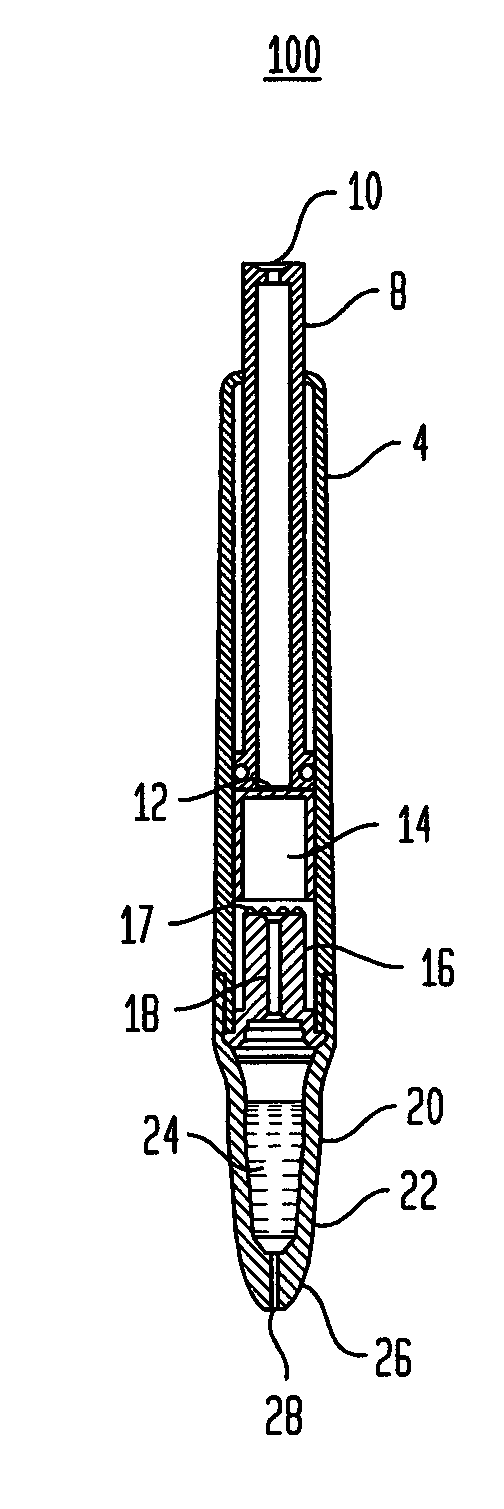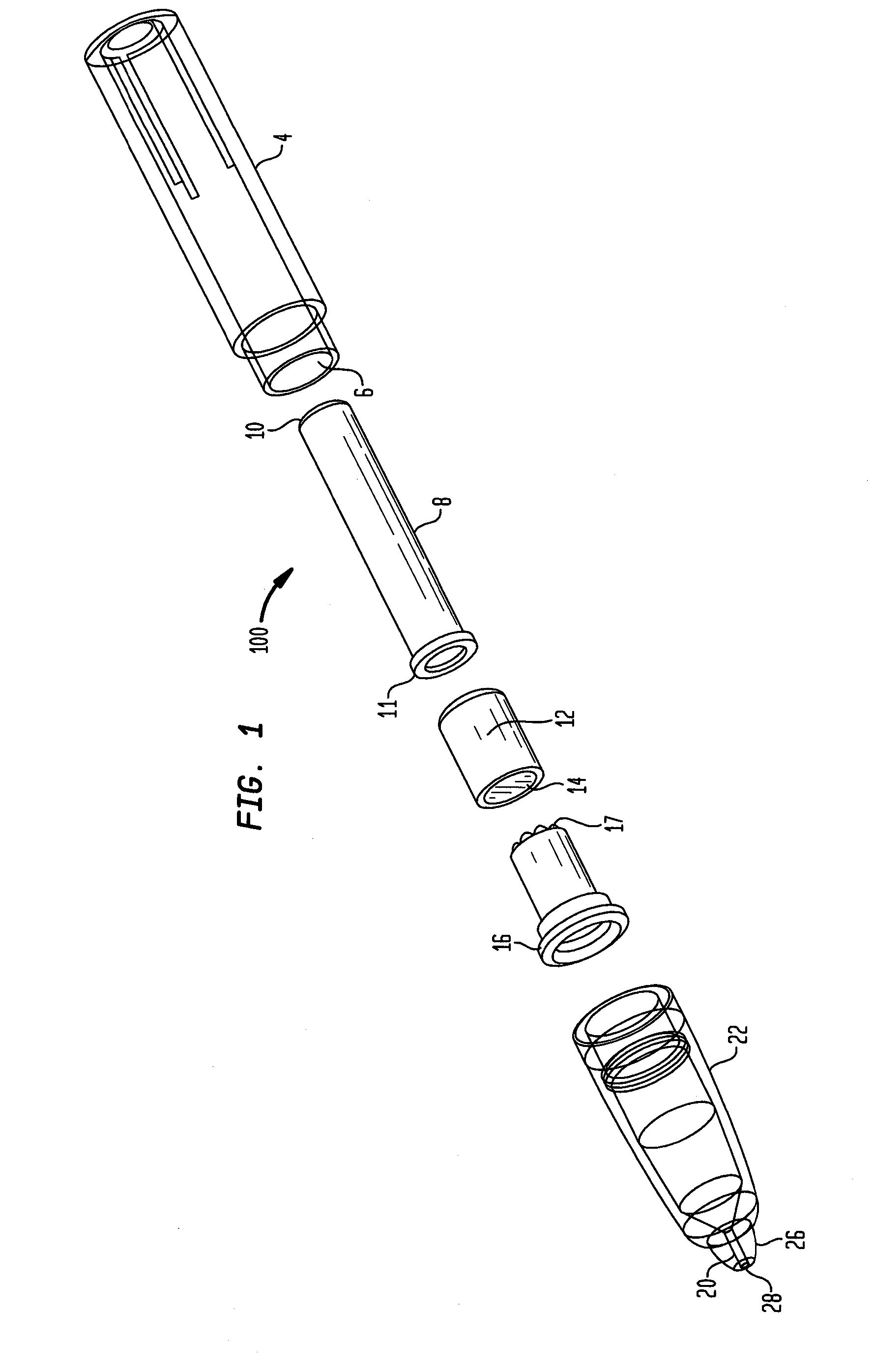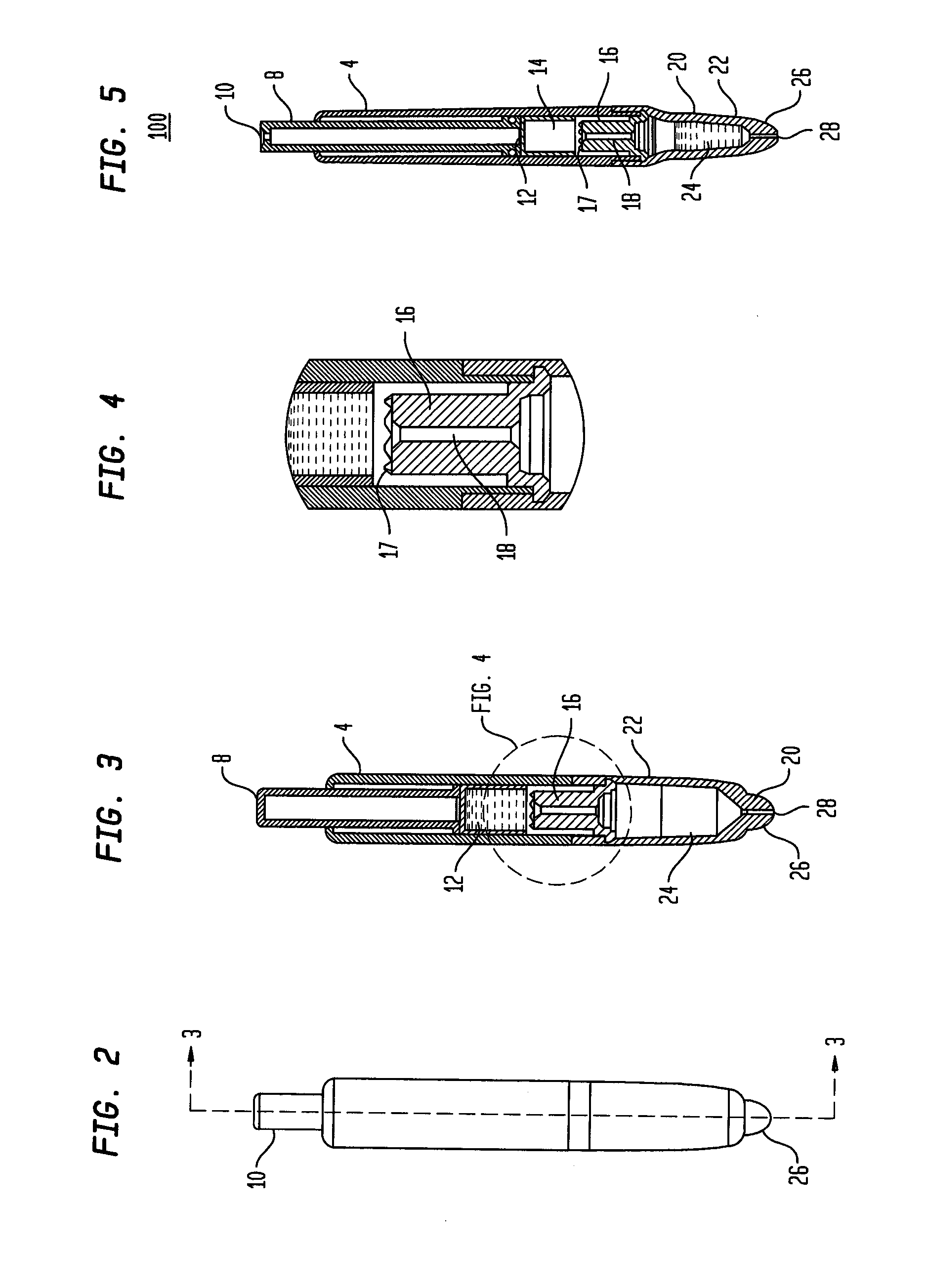Fluid applicator
- Summary
- Abstract
- Description
- Claims
- Application Information
AI Technical Summary
Benefits of technology
Problems solved by technology
Method used
Image
Examples
Embodiment Construction
[0064]As used herein, the terms fluid or fluids refer to any a substance, as a liquid or gas, that is capable of flowing and that changes its shape at a steady rate when acted upon by a force tending to change its shape. The terms fluid and fluid may also include delivery forms typically used for topical administration, such as encapsulated and packaged liquid suspensions or emulsions, powders, creams, salves, serums, ointments and the like. The terms fluid, adhesive, medicine or medication may be singular or plural and are used interchangeably herein.
[0065]As used herein, the terms fluid, medicine and or medication refer to prescription and over-the-counter medications, dietary supplements such as vitamins, minerals or cosmetic products. Further, the terms fluid, medicine and or medication refer to any product contained in an ampule form which the user has a need or desire to use in a user controlled application.
[0066]As used herein, an ampule or ampoule or phial is defined as a se...
PUM
 Login to View More
Login to View More Abstract
Description
Claims
Application Information
 Login to View More
Login to View More - R&D
- Intellectual Property
- Life Sciences
- Materials
- Tech Scout
- Unparalleled Data Quality
- Higher Quality Content
- 60% Fewer Hallucinations
Browse by: Latest US Patents, China's latest patents, Technical Efficacy Thesaurus, Application Domain, Technology Topic, Popular Technical Reports.
© 2025 PatSnap. All rights reserved.Legal|Privacy policy|Modern Slavery Act Transparency Statement|Sitemap|About US| Contact US: help@patsnap.com



